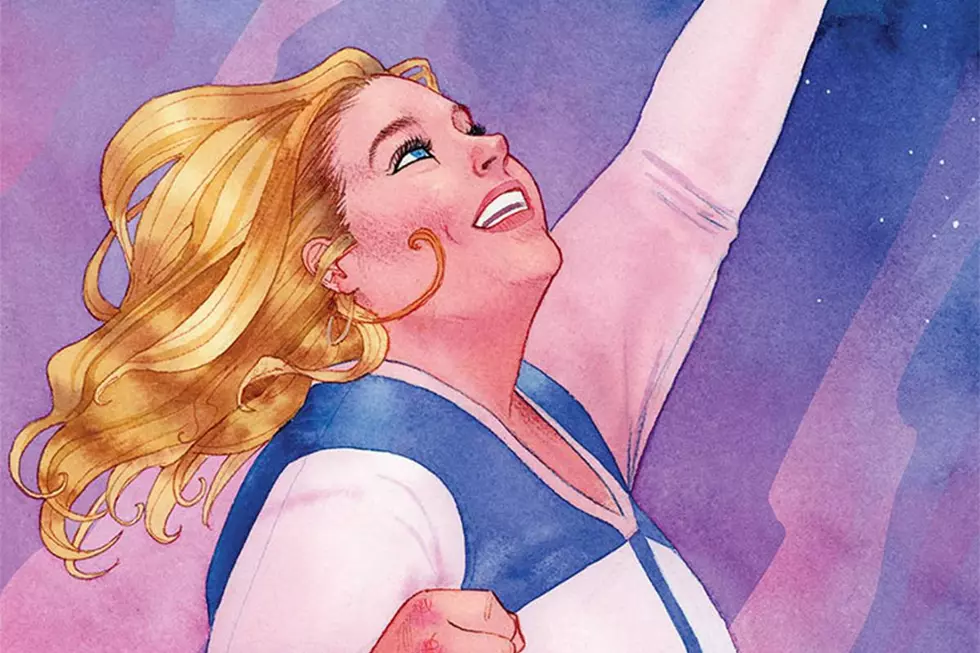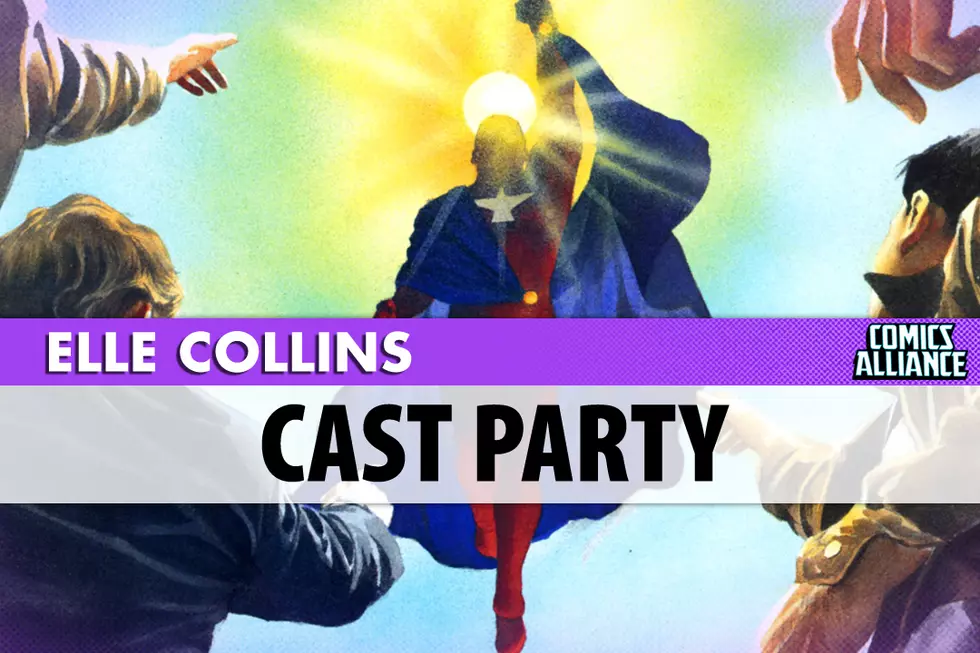
Give ‘Em Elle: Worlds Full of Superheroes
Welcome to Give ‘Em Elle, a weekly column that hopes to bridge the gap between old school comics fandom and the progressive edge of comics culture.
This week I’ve been thinking about superheroes universes, and what it means to have a whole population of costumed characters running around. Sometimes I think that the population of superheroes (and villains) that you don't have a chance to get to know is almost as important as the heroes at the center of the story.
It was this tweet that got me thinking about it, although I don't know that the question Ian is asking is exactly the one I'm going to answer. As far as “with the reach of DC or Marvel's,” no, I don’t think that’s possible. Marvel and DC have been deliberately building their universes for more than fifty years, and they were laying the groundwork decades before that, even if they didn’t mean to. They’ve just had so many comics that their universes have become a crazy quilt of teams and mythologies and characters who’ve been fleshed out (in their own books or others') over the years. You can’t catch up with that. Or maybe you could, but you’d have to spend just as long on it, and you’ll be lucky if civilization survives to see you get there, let alone the comics industry.
But I don’t think reach is the appeal of a superhero universe. The appeal of a superhero universe is depth. It’s not about how many characters are running around who could support their own books (although I guess if you’re successful enough, it could become about that). It’s about setting, and even more than that, it’s about genre.
Jerry Siegel and Joe Shuster’s Superman comics originated the superhero genre (although they were preceded by various pulp heroes and Philip Wylie’s Gladiator and so forth, so it’s not like the genre sprang out of nothingness), but those comics didn’t finalize the generic perimeters of superhero stories. The genre continued to develop, and still does. But by the 1960s, one key component of superhero stories is that superheroes live in worlds with other superheroes.
Spider-Man hangs out with the Fantastic Four in his very first issue. Green Lantern and the Flash team up to fight a team of villains. Batman and Superman are best friends who hang out all the time, and then later they’re uneasy allies who begrudgingly trust each other, until they become close friends again, but then reality gets rebooted… the point here is that they know each other. They live in different cities, but not too far apart for a day trip (especially if you’re Superman).
When I was young, I was fascinated by the idea of a superhero-populated world. I was recently discussing Wonder Man with some people, and I said that I always liked him as a kid because he was generic. I’m pretty sure the first time I ever saw Wonder Man, he only appeared for a couple of panels in a Hawkeye comic. Now this was before I’d read West Coast Avengers, let alone a reprint of Avengers #9 or anything like that. But it made perfect sense to me that Hawkeye had a friend named Wonder Man, with a big W on his torso. Hawkeye lives in a world full of superheroes, so there are lots of guys like that running around. Some of them are A-listers like Thor and Iron Man, but some of them are B, C, or D-listers.
This was and remains one of my favorite things about superhero stories: Just the fact that there are all these superheroes out there. You don’t have to know all of them (although I did try), but you never know when they might show up.
And they make their world look different than ours. Partly because they tend to come along with space invasions and crosstime crises, but also just because there are muscular people in brightly colored outfits fighting in the streets, and high above the streets. Superheroes are different from other kinds of characters, not just because of their powers, or because of their unique relationships to law and morality, but because they wear who they are right there on their outfits. They put a drawing of their favorite animal on their chest, or wings on their head, or they dress like a time period that they relate to more than the present. Superheroes are weird, and there’s nothing quite like them, and the more your world is crowded with them, the better, as far as I’m concerned.
The single comic that’s probably put the most effort into building its own superhero world is Kurt Busiek’s Astro City. Busiek obviously loves superheroes and superhero comics, so he’s created a setting of his own where he can tell those stories however he wants, alongside artists Alex Ross and Brent Anderson. And having a vast tapestry of different heroes gives him a lot of room to tell different kinds of stories, that interact with superhero fiction in different ways. Some of his heroes are deliberate analogues of big name guys — it doesn’t take super-senses to recognize who Samaritan resembles — but others are originals. And for every hero who’s been focused on over the years, there are ten more still in the background, adding color both literal and figurative.
Other creators have gone a similar route. Robert Kirkman’s Invincible focuses on one character, but the story hinges on him being the child of a superhero in a world where superheroes are a big deal. Alan Moore’s Top 10 took place in a huge city populated entirely by superheroes, with the background of every panel crowded with costumes. Austin Grossman’s Soon I Will Be Invincible is a prose novel that takes place in a comic book world, offering a new perspective on what might make a person decide to become a supervillain.
Of course, some stories go the opposite direction. Superman: Secret Identity (also written by Kurt Busiek) is about a Superman who emerges in a world where Superman is a fictional character. Lots of comics have started with the premise of a more realistic world in which a limited number of superheroes appear.
For a long time, live action adaptations of superhero comics, outside of occasional parodies like The Tick, would never really take place in a superhero world. They tended to take place in a world where the main character was the only superhero. But of course Marvel has worked hard to change that. Still, it’s only now, eight years into the Marvel Cinematic Universe, that it’s really starting to feel like a superhero-rich setting. In Captain America: Civil War, when Tony Stark seeks out Spider-Man, that was the first time I felt like we’d reached a point where we could say for sure that there are superheroes out there who we haven’t met yet.
To my mind, this is a plus. This is what I want out of superhero fiction: A world so full of superheroes that we might never meet them all. I would also prefer they wear colorful costumes instead of black body armor with subtle highlights, but that’s probably a topic for another day.
More From ComicsAlliance









